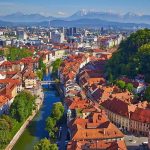Table of Contents
The Trump administration has been trying for months to remove Venezuelan President Nicolás Maduro from power. So far, they’ve failed miserably.
In January, Venezuelan opposition leader Juan Guaidó declared himself the country’s rightful president. He argued that Maduro, who has been in power for six years, rigged the election last May that kept him in charge — and that as a result, Guaidó, as the head of the National Assembly, is now the rightful interim president of the country according to the Venezuelan constitution.
The United States immediately backed his claim, and has been working ever since to help him push Maduro out once and for all. They’ve sanctioned politicians and businesses, sent much-needed food and medical aid, and helped sustain a global campaign to back Guaidó and boost his popularity.
And when Guaidó on Tuesday announced the beginning of a what he claimed was a military uprising against Maduro already underway in the country, the Trump administration issued strong statements declaring their full support:
Today interim President Juan Guaido announced start of Operación Libertad. The U.S. Government fully supports the Venezuelan people in their quest for freedom and democracy. Democracy cannot be defeated. #EstamosUnidosVE
— Secretary Pompeo (@SecPompeo) April 30, 2019
But that military uprising never materialized. Maduro has steadfastly refused to step down. And now the administration is scrambling to figure out what to do next.
It’s just not clear how much else the US really can do short of military intervention. And that’s a bad position to be in.
The Trump administration is scrambling to find a workable anti-Maduro plan
Trump’s National Security Council convened a meeting of mid-level officials on Venezuela Thursday afternoon — part of an increased tempo of Venezuela-focused meetings — to discuss all possible options short of military intervention, according to two people familiar with the matter. One idea brought up repeatedly was sanctioning and further condemning Russia for its staunch support of Maduro, one official told me, although no decision has yet been made.
And on Friday morning, National Security Adviser John Bolton, Secretary of State Mike Pompeo, and acting Defense Secretary Patrick Shanahan met at the Pentagon to go over military options.

But it remains to be seen whether this latest round of discussions will help find a workable solution that could actually achieve the administration’s goals without causing more problems — and without harming the very people they claim to be trying to help.
Thinly veiled military threats, including from President Donald Trump, have greatly worried current and former US officials and even pro-Guaidó Venezuelans who would suffer the consequences of such a move. Increased sanctions on Maduro’s regime and the nation’s oil sector have mainly backfired as feared.
The public naming of Maduro officials who may have secretly spoken with Guaidó’s side about a transition have temporarily ended their contact. And Guaidó’s gambit this week to force a military ouster of Maduro failed — the third time a major move didn’t pan out.
Putting these together, I asked a US official if it was fair to say the Trump administration has so far botched its anti-Maduro plan.
The answer was simple: “Yes.”
The four failures of the Trump administration’s Venezuela strategy
It’s of course possible that the US will succeed in ousting Maduro given more time. The problem is that the Trump administration’s actions so far have only served to make that outcome less likely, not more.
There are four main reasons for this.
1. Almost everyone else involved is opposed to US military action
The Trump administration has made no secret that it’s considering military options to forcibly remove Maduro should he not step down on his own.
“Military action is possible. If that’s what’s required, that’s what the United States will do,” Pompeo told Fox Business’s Maria Bartiromo on Wednesday, but added, “We’re trying to do everything we can to avoid violence.”
And when the same network asked Trump about the Venezuela situation hours later, he replied that they were “doing everything we can do short of, you know, the ultimate” — in other words, short of military action. “There are people who would like to have us do the ultimate,” he added.
While no expert I spoke to said they thought a military intervention was imminent or likely, they all worried that tough talk like this increases that possibility.
“The US has used such strong and, perhaps reckless, rhetoric on Venezuela these last few months, that it puts us in a bind,” Fernando Cutz, a former Trump National Security Council official who worked on Venezuela, told me. “Either we double down and follow through on our threats, involving ourselves in a way that I don’t believe most Americans are looking for the US to involve itself, or we back down and risk our credibility on foreign policy.”
A military option for Venezuela would be catastrophic, two former top US military chiefs overseeing operations in Latin America told me last year.
It would only exacerbate the chaos in Venezuela and make it even bloodier. The country has one of the largest stockpiles of weaponry in the Western Hemisphere, and it’s not well safeguarded, two experts wrote for Foreign Policy on Thursday. That sets the stage for fierce battles that could unfold in cities around the country and raises the possibility that a protracted fight against armed factions loyal to Maduro could continue even if he were eventually toppled.
And regional countries that back Guaidó and support America’s efforts are against military intervention. Brazil, for example, has already said it wouldn’t let the US use its territory to invade Venezuela.
Even those in Venezuela who want Maduro out don’t want the US to use military force to make that happen. “We don’t want it,” an 18-year-old protester in Venezuela told the Washington Post on Thursday. “Do more sanctions. Apply more diplomatic pressure. And we thank you for what you’ve done. But do not send your military. That would spark a civil war and only divide Venezuelans.”
Those and other reasons have led many to strongly warn against invading Venezuela.
“US pressure via a military option would likely alienate regional allies and a large number of moderate Venezuelans in the Guaidó coalition and make the reconstruction of Venezuela much more difficult,” John Polga-Hecimovich, a Venezuela expert at the US Naval Academy, told me.
2. Sanctions on Venezuela’s oil sector have backfired
The Trump administration’s main strategy for removing Maduro thus far is straightforward: sanction the top officials around him and the regime’s main moneymaker — the country’s state-run oil company — and Maduro will lose support quickly.
But while it makes sense in theory, experts say it hasn’t worked in practice.
Polga-Hecimovich told me that sanctions imposed on Petroleos de Venezuela (PdVSA) — the behemoth state-owned oil and natural gas company that provides the country with thousands of jobs and billions in revenue — in January have only served to push Maduro’s regime closer to Russia.
That’s a problem for the Trump administration, which strongly opposes any attempts by Moscow to establish a firm foothold in what the US sees as its own turf: the Western Hemisphere.

What’s more, a US official told me in January that sanctions on PdVSA essentially gives Maduro even more ammunition to paint the US as a big, mean bully trying to destroy Venezuela and make its people suffer.
If the economy tanks even further than it already has, the Venezuelan leader can blame the US sanctions and perhaps regain some favor among both the elites — particularly the military leadership — whose support Maduro needs to remain in power, as well as everyday Venezuelans who are the most vulnerable to economic pressures.
Maduro needs a good scapegoat: Millions have fled the country due to the crippling economic crisis gripping the country. Inflation is through the roof. Hunger rates have skyrocketed. And diseases once thought eradicated from Venezuela have sparked a new health crisis.
Unsurprisingly, all of this and more has made Maduro an unpopular leader. But if he can blame the US for some of the woes, it may help relieve some pressure off of him.
A current and former Trump administration official told me that sanctions on PdVSA were supposed to be the last resort in the push to force Maduro out. But the administration chose to play that card on January 28, five days after officially recognizing Guaidó as Venezuela’s legitimate leader.
Since then, the current official told me, top Trump aides have been “scrambling” to come up with new ideas to further punish Maduro. In other words, the US depleted its ammunition early, and now it’s struggling to stay in the fight.
3. Exposing Maduro officials’ alleged secret talks with the opposition may have pushed them away
One of the most puzzling moves by the Trump administration has been the decision to publicly name top Maduro officials whom they say were in contact with Guaidó’s camp.
“We think it’s still very important for key figures in the regime who have been talking to the opposition over these last three months to make good on their commitment to achieve the peaceful transfer of power from the Maduro” regime, Bolton told reporters on April 30.
He specifically named three people: Venezuela’s minister of defense; the top judge on the nation’s Supreme Court; and the leader of the presidential guard.

And all three figures have shown public support for Maduro since.
Bolton offered no concrete evidence for his claim, and experts can only guess why the Trump administration would make it in the first place — and so publicly.
“Calling out names publicly is clearly an attempt to cause divisions and distrust with Maduro’s coalition,” David Smilde, a Venezuela expert at the Washington Office on Latin America human rights group, told me. “If they really were negotiating with these people, they would keep it private.”
What is clear is that the Trump administration, wittingly or unwittingly, put top Venezuelan officials in danger in an effort to hurt Maduro.
4. Guaidó made three moves to oust Maduro. They all failed.
At dawn on Tuesday, Guaidó launched his boldest — and riskiest — gambit yet: releasing a video calling on the entire country, including the military, to rise up and overthrow Maduro once and for all.
Flanked by a few dozen armed members of the Venezuelan National Guard and several armored vehicles at an airbase in the capital city of Caracas, Guaidó announced the start of what he called “Operación Libertad” (Operation Liberty), which he said was the “final phase” of the push to remove the entrenched socialist leader.
Just a few hours after the video was released, US National Security Adviser John Bolton and Secretary of State Mike Pompeo publicly threw their support behind Guaidó’s operation, suggesting the US may back whatever military measure the interim president deems fit.

But it didn’t work: Few troops defected to join Guaidó’s side, thereby not allowing him to forcibly topple Maduro. Guaidó, however, was successful in mobilizing thousands out into the streets, leading to clashes that killed at least four people and injured dozens more.
Experts weren’t impressed by the effort. “It became obvious that Guaidó misread the amount of support he could mobilize within the government, and that failure will make it harder to keep people on the streets,” says Tom Long, a Latin American politics professor at the University of Warwick. “It is already really hard to maintain that mobilization while most people are struggling to get by in a context of total economic collapse.”
The problem for Guaidó is that the episode was his third false start. The first was when he first declared himself interim president. While he got US and broad international support in response to the move, Maduro didn’t step down.
The second happened in February when he traveled to the Venezuela-Colombia border to accept US-provided aid that Maduro rejected. The hope was that the scene would lead Maduro’s troops to defect out of disgust — but that didn’t happen. In fact, that drama backfired on Guaidó as an anti-Maduro protester burned one truck carrying the delivered cargo.
Guaido’s scorecard — three swings, three misses — doesn’t look good for him, or for his main backer, the United States.
Things could always change, but it seems unlikely right now
Not all of the Trump administration’s Venezuela moves have been bad, experts say, and they note that some progress has been made.
“US support of multilateral pressure, diplomatic recognition of Juan Guaidó as president, and the use of targeted sanctions against senior Venezuelan officials complicit in narco-trafficking or repression were all appropriate moves,” Polga-Hecimovich told me.
This week’s drama also showed that there are some cracks in Maduro’s support, especially since he didn’t deploy tanks or warplanes to quell Guaidó’s so-called “final push.” That suggests his backing among the military’s rank and file may not be as strong as he judges.
And the fact that Guaidó remains free from harm or imprisonment shows that Maduro may not have as much power as he thinks — or that he’s not sure just how far he can go to crack down on the uprising before his supporters abandon him.
Still, it’s clear that toppling a dictator is never as easy as it looks.
“Even without democratic legitimacy or much popular support, Maduro has access to the resources and capabilities he needs to defend the status quo,” says Long. “As Guaidó has learned, overturning the status quo is much more difficult.”
Posts from the same category:
- None Found









